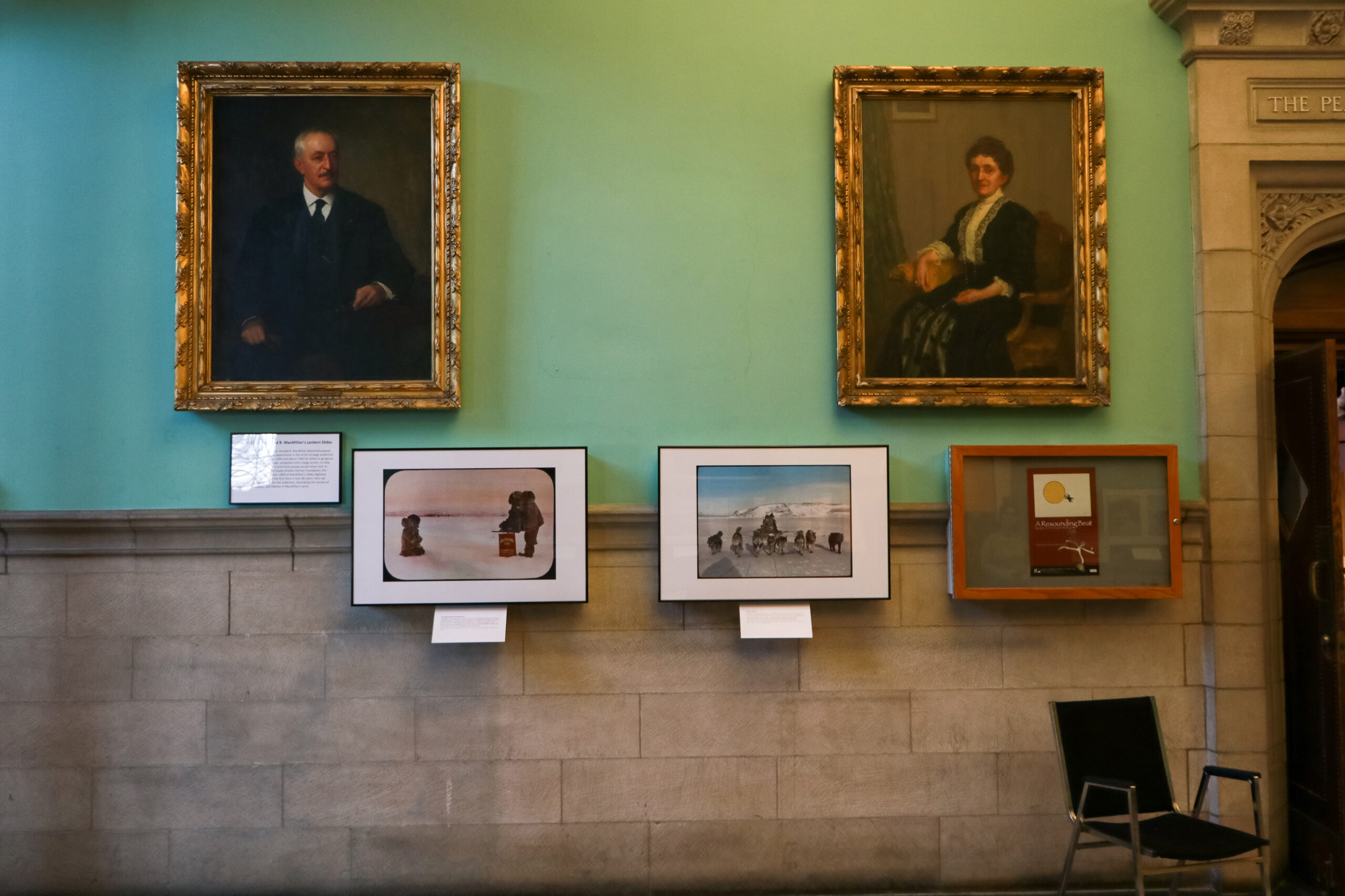MacMillan’s unseen images displayed in Arctic Museum
January 24, 2020
 Ann Basu
Ann BasuThrough the exhibit “Colorful Arctic: Donald B. MacMillan’s Lantern Slides,” the Peary-MacMillan Arctic Museum showcases its collection of MacMillan’s hand-tinted glass slides. Lining the museum’s entrance are large photographs of snowy landscapes, rare portraiture of Northwest Inuits and behind the scenes photos of MacMillan’s adventures—among them, a near-shipwreck so dramatic that it seems like a painting upon first glance. These pieces are the result of the most recent digitization effort of glass slides used by the Arctic explorer to share his discoveries to audiences across the U.S..
The nature of the medium exceeds the boundaries of documentary photography and requires an element of creativity.
“[To create these slides] they print a photograph on glass instead of paper and then hand it over to an expert. That expert hand colors the slide to create a color image and seals the color with another piece of glass,” said Genevieve LeMoine, curator of the Arctic Museum.
Due to the age and material of the lantern slides, they are incredibly fragile and thus are difficult to display. Now, due to a generous $10,000 grant from The Gladys Krieble Delmas Foundation, a non-profit dedicated to encouraging scholarship in the arts, the museum staff has been able to digitize over over 2,000 slides and make them all accessible on the museum’s website.
Despite their fragile nature, such slides were useful for MacMillan, who curated them specifically to use as visual aids for cross-country lectures he gave about his travels in the Arctic.
“It was the old-fashioned way of giving presentations before they had come up with Powerpoint or even 35-millimeter slides,” LeMoine said.
Unlike some of his colleagues who would edit photos to get specific backgrounds and dramatize a photo, MacMillan was deliberate about taking such photos for documentation purposes and kept his prints untampered.
“Sometimes we have negatives for images used in textbooks where they’ve crudely put in a horizon or added a background photo to a different one to tell a specific story. MacMillan wasn’t creating stories in that way,” said Assistant Curator Mike Quigley.
Although MacMillan still had some artistic input, his artists used other photos for reference when coloring. When sending back film, he wrote instructions regarding the coloring on the envelopes. The effect is visible in pieces on display—such as the picture of a pile of salmon hanging in the museum lobby. Only the pink spots of the fish are truly colored—but the image looks like it was taken in color because our brains fill in the rest.
This collection allowed MacMillan to give a truly unique presentation on the Arctic. Although he was not the first explorer to share his experiences from the region, his lengthy stays gave him an edge compared to other explorers.
The lantern slides reflect MacMillan’s familiarity with the indigenous peoples of Greenland.
By featuring a smiling woman, working crews and two children playing with a camera, his portrayal of Inuit people departs from that of his contemporaries, whose photos are much more formal and sober.
Without this digitization effort, many of these slides and their unique characteristics would likely have remained unknown.
“Before we did this project, we hadn’t seen a lot of these images before,” said Quigley. “Now that they’ve been digitized with such great resolution, anyone can see them and learn about his lectures and the Arctic.”

Comments
Before submitting a comment, please review our comment policy. Some key points from the policy: